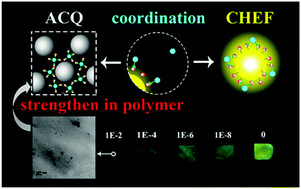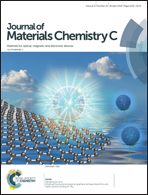Yellow-emitting carbon-dots-impregnated carboxy methyl cellulose/poly-vinyl-alcohol and chitosan: stable, freestanding, enhanced-quenching Cu2+-ions sensor†
Abstract
Carbon dots (CDs) have a combination of desirable fluorescence and chemical properties, which makes them relevant for sensing in aqueous environments. However, CDs suffer from aggregation-induced instabilities in their sensing performance. In this study, we attempted to address this problem by focusing on Cu2+-ions detection compliant with US Environment Protection Agency's (EPA) standards (i.e. requiring detection as low as 1.3 ppm). The as-prepared yellow-emitting carbon dots (y-CDs) prepared via a one-step hydrothermal process had high water dispersivity and prominent fluorescence properties. However there were two contrary mechanisms (aggregation-caused quenching vs. the chelation-enhanced fluorescence effect) for y-CDs with the addition of Cu2+ ions. The y-CDs/polymer composite sensor reported here comes in two forms: y-CDs impregnated with: (a) carboxy methyl cellulose/poly-vinyl-alcohol or (b) chitosan. Although selectivity existed in both (a) and (b), the sensor response of (b) films was remarkably more sensitive than that of (a) films, due to the chelation mechanism of chitosan with Cu2+ ions. Through an optimized sample of system (b), a 10 nM/1.3 ppm detection limit for Cu2+ ions was achieved, which shows it was EPA compliant.



 Please wait while we load your content...
Please wait while we load your content...